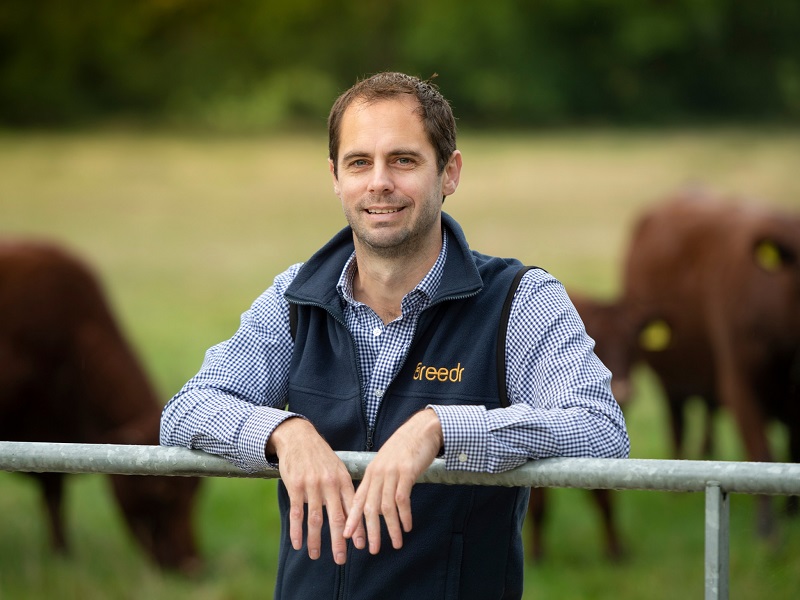UK beef farmers could boost profits by £100 a head and collectively save £650m a year in feed costs by finishing more animals in-spec – and a free app can help them do it.
Breedr – the brainchild of an Australian beef farmer and developed in the UK with the help of producers throughout the supply chain – measures and monitors individual cattle data and predicts optimum finishing times based on actual growth rates. In addition, it’s helping farmers to form private integrated supply chains, removing unnecessary costs and improving transparency to the benefit of all.
“We already have 900 farmers using the app, and analysis of their kill-sheets shows that 79% of their cattle hit top specification versus an industry average of 55%,” explains Breedr founder Ian Wheal. “If you roll that out across the UK beef sector, that’s 474,320 more animals in prime beef spec each year.”
In addition, Breedr farmers finish their cattle five months earlier than the industry average, saving 1.8t of feed per head and reducing their carbon footprint by 20%.
“There are a lot of changes coming down the pipeline for UK beef producers – and proving the value and quality of our beef will be vital,” says Mr Wheal. “Out-of-spec beef leads to a poor consumer experience, but data silos throughout the supply chain make it really hard for farmers to get feedback. Our app facilitates that flow of information so that finishers, store producers and calf rearers can all identify the best genetics, best management and best suppliers to improve productivity every step of the way.”
The phone app syncs with the British Cattle Movement Service to carry all the information about animals in a herd. Producers can scan an electronic ID or enter passport information to see everything about an animal, with the ability to record medicine usage to Red Tractor standards.
But the most valuable feature is weight recording and predicted finishing dates, says beef producer and Breedr product manager James Wright. “This is a really powerful tool. You can manually or automatically read weights in Crush Mode and based on actual growth rates predict the optimum slaughter date. This means you can plan your feeding, sales and cash flow. It’s made my herd management so much easier.”
Anonymous benchmarking against comparable farms and having proven weigh data means producers can both further improve efficiencies and command a premium for their finished stock, he adds.
In addition, they can take a loan secured on the value of their cattle to cover the cost of feed or replacements, and sell direct to a processor through the app, which relays processor demand for spot or forward purchasing.
Doug Dear contract finishes 2,000 cattle a year at Osgodby Grange, Selby, Yorkshire, and has helped to fine-tune the app over the past two years. “Data is king – we can record feed conversion efficiencies and growth rates, and measure the impact of any changes in diet,” he says. “We can anticipate when cattle are going to be ready, meaning we know when space will become available for store suppliers – everything is at the touch of a button.”
Breedr takes a 1-3% commission on sales made through the app, and organises all transport and payments. “I absolutely love that service – for a big feed lot like ours it’s one less job for me,” says Mr Dear.
Through the network of Breedr users, he has set up a private integrated supply chain with a dedicated calf rearer and store producer, with whom he shares the data about each animal’s performance. “It works really well, because we’re all talking to each other and the cattle are presented exactly as we want them. It all adds up to us making more profit, with no third-party costs.”
The app is soon to launch an enhanced live marketplace, that will make it even easier for farmers to form their own integrated supply chains, buying and selling stock with proven traceability and weight history.
Changing industry demands – like having to trace dairy bull calves for the first eight weeks of life, and increased competition through trade deals – mean there are both challenges and opportunities ahead for the British beef industry, says Mr Dear. “We’re going to have to be ultra-efficient and work together to ensure a consistent supply of top-quality cattle. Breedr can help us to do that.”
For more information visit www.breedr.co





